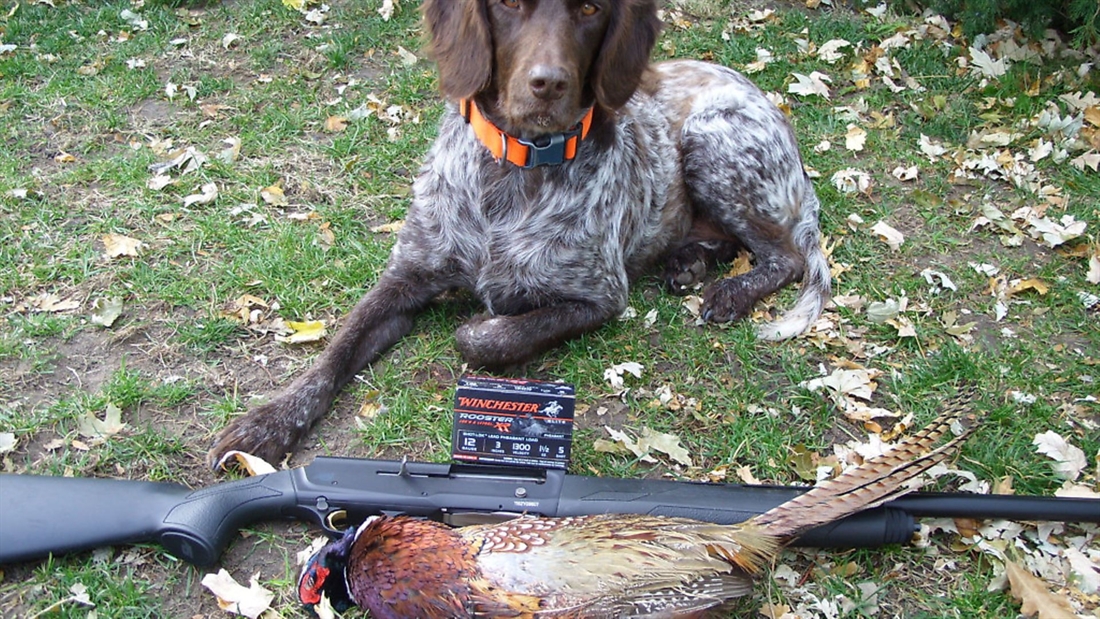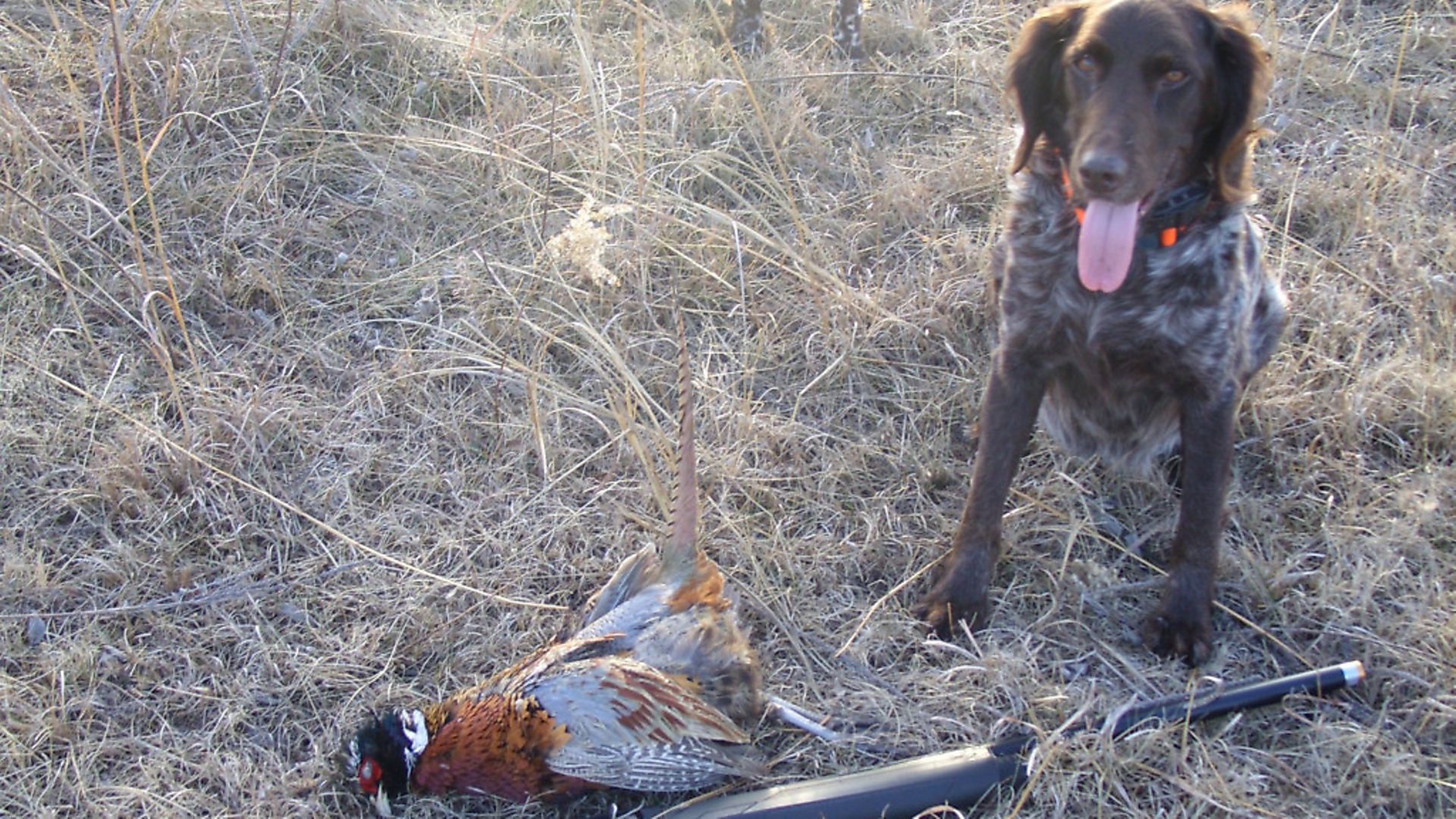Canine chemotherapy – is it worth it?

American hunter Jarrod Spilger shares his experience of his beloved dog’s treatment journey after receiving the diagnosis everybody fears… cancer
In February 2018, my seven-year old Small Munsterlander, Phantom, began exhibiting flu-like symptoms. She had a cough, which developed into finding it difficult to swallow her food. Closer examination revealed her lymph nodes were also swollen. Phantom was put on antibiotics and tested for the dog flu, but the vet warned she may have lymphoma.
In March 2018, after undergoing a fine-needle aspirate and abdominal ultrasound, Phantom was definitively diagnosed with lymphoma by the canine oncology experts at Colorado State University. My wife and I were crushed.
The CSU oncologist had a plan, though. He provided us with a CHOP-based chemotherapy protocol used to treat canine lymphoma. We returned to our home in Nebraska, fearful but hopeful. After finding a local vet willing to administer the drugs, Phantom began the treatment in mid April.
The CHOP protocol consists of four chemotherapy drugs: Vincristine, Cytoxan, Doxorubicin, and Prednisone. A different drug is given each week.
Week One: Vincristine. Phantom tolerated this drug fairly well.
Week Two: Cytoxan, administered in tablet form. There is a chance of sterile hemorrhagic cystitis developing with this drug, which is essentially a really bad bladder infection. To offset this side effect, Lasix is given in conjunction with Cytoxan. This is important, because during Phantom’s second chemo cycle, Lasix was inadvertently omitted. The result was an incontinent dog until we got that under control. Lasix was given each time after, and there were no more problems.
Week Three: Doxorubicin. This was the toughest drug on Phantom. All chemo agents have cumulative effects, but Dox was the worst of the bunch.
Week Four: rest week.
The fourth drug, Prednisone, was given immediately upon diagnosis and continued throughout the first cycle. It was then administered as needed throughout the rest of the cycles. Being a steroid, it both strengthened Phantom and improved her appetite. That latter benefit was important to maintain her weight, since the drugs are measured out based on the dog’s weight. In my experience, Prednisone can be hard on humans, but Phantom tolerated it well and didn’t seem to have any negative side effects – other than a raging appetite that kept me buying dog food!
I also gave Phantom B-complex powder mixed in with soft dog food to boost her blood counts and immune system. It helped. Although her blood counts fluctuated, which is to be expected, they remained adequate to continue chemo.
In all, there are four cycles for a total treatment time of 15 weeks. After treatments ended in late July, all we could do was wait and see what happened. Phantom was frequently monitored. By 1 September, opening day of dove and grouse season, she was cleared to go hunting. She was officially in remission.
Her energy, stamina and prey drive were back to normal, and her nose was certainly up to snuff. She pointed prairie chickens like the old pro she is. When she did get tired, I simply brought in the back-up youngster.
Not knowing how this would play out, in March I’d also ordered another Small Munsterlander pup. Komet was born in late April and came home in late June. He and Phantom are first cousins, and he immediately boosted her spirits – or at least gave her something different to think about.
I initially alternated dogs, but eventually started hunting them together. Komet went along with us on a successful September grouse hunt. Phantom was quick to make the retrieve and show up her cousin. While Komet didn’t really help us, he certainly didn’t hinder us, either.
He joined us on hunts in October and November, and by December, I was comfortable hunting them in tandem. On 23 December, I took both dogs hunting, and Komet flushed four quail from an overgrown fenceline. Phantom and I quickly followed him.
He reflushed a single, which I hit in an explosion of feathers. Komet ran past it in his excitement, but Phantom happily made the retrieve. We then sat down and took a moment to reflect on this tag-team quail. “I could get used to hunting with two dogs,” I thought to myself.
Then, on Christmas morning, Phantom woke up sick. We took her to the vet the next day. Her lymph nodes were enlarged, and tests confirmed the cancer had returned.
Plans were made to begin chemo again. In the meantime, I continued hunting Phantom. She retrieved a big Canada goose for me on 9 January. The following day, I took both dogs hunting. Midway through a grassy field that I suspected held a few pheasants, they both started getting birdy, tails wagging furiously. Phantom kept flash pointing and relocating.
Suddenly, a rooster erupted behind me. I twirled around and hit it. The pup was on the dead bird immediately. This was Komet’s first wild pheasant find. Although he got credited with the retrieve, a jealous Phantom kept trying to pick up the bird and steal his thunder as I attempted to take pictures. In retrospect, though, the torch had been passed.
Phantom was to begin chemo on 21 January, her 8th birthday, but woke up sick that morning. Her blood counts were low, and the vet postponed treatment until the next day. However, by evening, I knew that wasn’t going to happen.
She passed away the following morning at home in our bedroom, of her own accord. I thanked God for that. I was also thankful she didn’t have to endure chemo again. She was much weaker and the cancer much more aggressive the second time around.
Regardless, I don’t regret giving her chemo. We were warned remission might be short. Chemo bought us nearly one more year together, during which time Phantom continued hunting and trained her successor.
Just before she passed, Komet laid down next to Phantom and pressed his nostrils against hers, as if trying to breathe his life force into her. That’s love. Yes, canine chemo was worth it.






